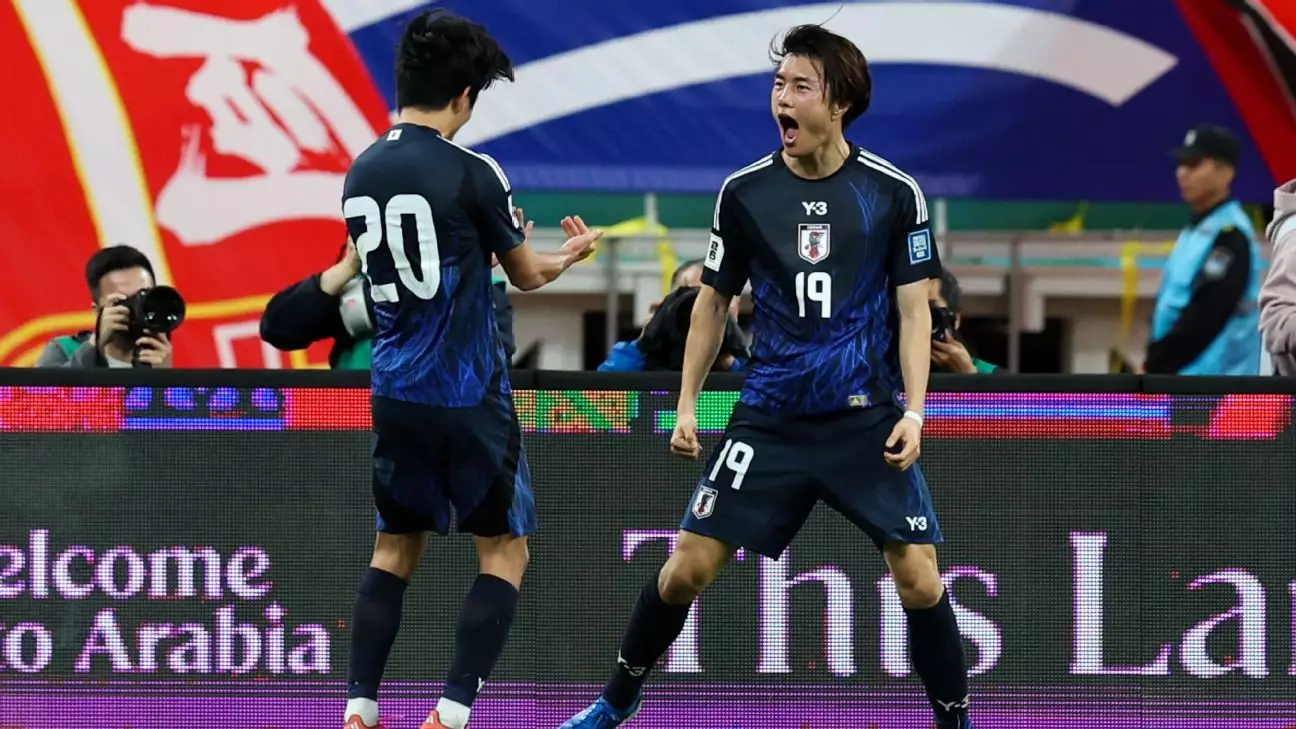As the Asian qualifiers for the 2026 FIFA World Cup unfold, Japan stands on the brink of achieving its eighth consecutive participation in the world’s most prestigious football tournament. With four matches remaining in the third round of qualifiers, the dominance of the Samurai Blue is evident, as they hold a commanding nine-point lead over their nearest competitors in Group C. Anticipation builds for the resumption of qualifiers, set to resume in March 2024, where a decisive match against Bahrain could seal their ticket to the World Cup. Should they fall short, a five-day interval later presents another opportunity to clinch qualification against Saudi Arabia. However, qualification has become a given for Japan; the real ambition now lies in achieving more than just making an appearance.
Setting Audacious Goals: Aiming for the Top
Head coach Hajime Moriyasu has raised the stakes by declaring an astonishing goal for Japan: to win the World Cup. This ambition may seem audacious, particularly given that no nation outside Europe or South America has ever lifted the trophy. Yet, Moriyasu’s proclamations align with the Japan Football Association’s long-term vision, “The JFA Pledge for 2050,” which explicitly aims to secure a World Cup victory within the next three decades. With mid-term objectives set, including aspirations to reach the semifinals by 2030, Japan is clearly committed to a transformative journey, one which necessitates more than just skill on the pitch.
A crucial factor in Japan’s potential contention for World Cup success is the strength of their squad. Their recent performances, particularly at the 2022 World Cup, showcased their capability to compete with top-tier teams, evidenced by victories over Germany and Spain. Coach Moriyasu has cultivated a starting XI primarily drawn from European leagues, including players such as Zion Suzuki in goal and a robust defense featuring Ko Itakura and Shogo Taniguchi.
The midfield is equally compelling, boasting talents like Wataru Endo and Hidemasa Morita, while the offensive lineup is spearheaded by dynamic players such as Takefusa Kubo and Takumi Minamino. While Japan may not yet rival the heavyweights like Argentina or France in individual talent, their collective synergy offers a different form of strength that can translate into compelling performances on the global stage.
Despite their commendable starting lineup, Japan’s squad depth presents a pressing concern. While players like Daizen Maeda and Reo Hatate play significant roles in club football, their impact on the international circuit has been muted. Injuries to key players such as Ueda and the absence of seasoned talents like Takehiro Tomiyasu further complicate matters for Moriyasu. The continued inclusion of veterans such as Yuto Nagatomo, albeit impressive at the club level, signals a potential gap in emerging leadership.
The inconsistency in performance and the lack of a strong reserve often lead to a complacent atmosphere within the team. This scenario might keep key positions overly secure, hindering healthy competition that could elevate the performance of the entire squad.
Moriyasu’s coaching style has often drawn mixed opinions. His success against elite teams at the World Cup revealed a tactical prowess; however, his conservative approach against less formidable opponents sometimes raised eyebrows. Thankfully, he appears to be adapting, shifting toward a more aggressive style that leverages speed and attacking flair, involving several offensive players in contrasting formations. This newfound approach has borne fruit, particularly in recent qualifying matches, leading to dominant victories that embolden the team’s confidence.
Whether Moriyasu’s tactical evolution will withstand the rigors of competition against superior European and South American sides remains to be seen. However, his willingness to embrace a more fearless game is a noteworthy step in Japan’s quest for footballing distinction.
The cultural ethos of Japanese football rests on respect and humility. Yet, as they pursue greatness, there needs to be a growing assertiveness, an awareness that greatness sometimes requires a departure from cultural norms. Demonstrating humility must not preclude a ferocious desire to contend and potentially conquer.
Recent performances have started to suggest a shift in mindset. The Samurai Blue have approached matches with a decisiveness previously absent, exhibiting a lethal efficiency in their outings against weaker opponents. Their desire to maintain competitive intensity, even when victory seems assured, displays an exciting, evolving mentality that could prove vital as they strive for success on the world stage.
With qualification for the World Cup nearly assured, Japan’s journey is poised to continue. While aiming to seize the championship may currently seem ambitious, reaching the quarterfinals for the first time represents a tangible milestone on their road to footballing excellence. It is a journey that promises to be thrilling, layered with opportunities for triumph and growth.

Leave a Reply